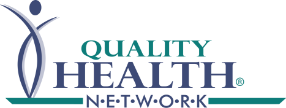School based health clinics (SBHC) offer students, enrolled in the school district, interdisciplinary on-site healthcare services. In Colorado, SBHCs have been strategically placed in school districts with highest rates of childhood poverty and the lowest rates of insured children, bringing care directly to children in-need regardless of insurance status or the ability to pay.
The Roaring Fork School Based Health Center opened its first clinic in the Basalt High school in 2007 and clinics in the Basalt elementary and middle schools the following year. With the start of the 2015 school year, they opened the first SBHC in Carbondale at Roaring Fork High School. At each location they provide accessible and affordable primary healthcare, health education, preventative dental services, nutritional and behavioral health counseling.
Clinic is an Integrated Part of the Medical Neighborhood
“We try to address all medical needs of the students in a very holistic way. Frequently we become the pediatric practice and sole healthcare provider for our students until they graduate,” said Haidith Ramirez-Leon, Program Director. “We saw connecting with QHN as a very important tool. As a community we are moving forward with a healthcare system that is more interconnected and comprehensive where all the providers are able to communicate in a meaningful way to provide better services for their patients. We wanted to be part of that. We didn’t want to be an outside bubble.”
Roaring Fork School Based Health Center is open to every child in the school district, which encompasses 5,500 youth. Their focus has been on services for the Basalt area which has a 1,500 student population. “The demographics of the area are interesting, as this attendance center is 60 percent Hispanic; many of them are newcomers from Central America trying to escape the economic crisis and violence in their countries. These young people don’t have legal status or any ability to communicate in English, these children are living in crisis; this population definitely needs our services.”
SBHCs Connect Kids to Healthier Lives
The impact of SBHCs is well documented—kids are more likely to get timely preventive care, such as physicals and immunizations. Chronic conditions, such as asthma, obesity, and mental health conditions are better managed and academic performance has been shown to improve in schools with on-site clinics.
“Because we are not considered the PCP for every child we see, the connection with the other PCP’s in our community is invaluable. We have the capacity to see a child every single day, if necessary, while supporting care for a chronic condition. We often help manage ADHD medications or navigate the changes needed in diet and medication management for newly diagnosed diabetics. The communication through QHN in amazingly valuable, because the PCP can see our notes in real-time and we can see the PCP’s notes to better manage and coordinate care.”
“We use QHN for care coordination extensively, we have an on-site care coordinator and she uses QHN every single day. We serve a population that is very transient, they move from Rifle, to Glenwood, to Basalt, etc., and we can access all their records through QHN.”
Exploring Innovative HIE Usage to Expand Services
Ms. Ramirez-Leon is energetic and creative in her role as director of the Roaring Fork School Based Health Centers continually seeking new opportunities to expand the services offered at the centers. Currently she is exploring grant prospects to implement Image Exchange through QHN to pilot a more comprehensive dental program. Their program has been unique and pro-active in populating the QHN patient longitudinal record with their dental notes. They have a dental hygienist on staff but they have been unable to offer services beyond basic dental care. “We are working on a pilot to establish a more comprehensive dental program for our school community where our hygienist will be taking dental images and we want to have the capability to send images through QHN to a referring dentist,” continued Ramirez-Leon. “The dentist would create a care plan and our hygienist could then provide some of the care. QHN would play a critical communication role in the coordination of care between the dentist and hygienist. We are trying to be creative with the resources we already have in place.”



